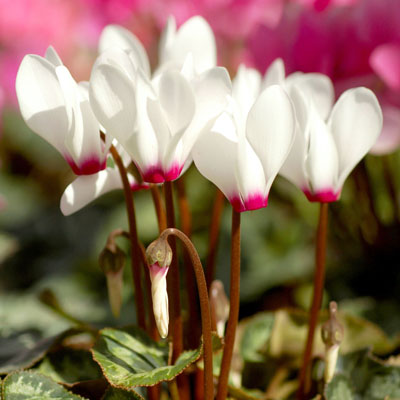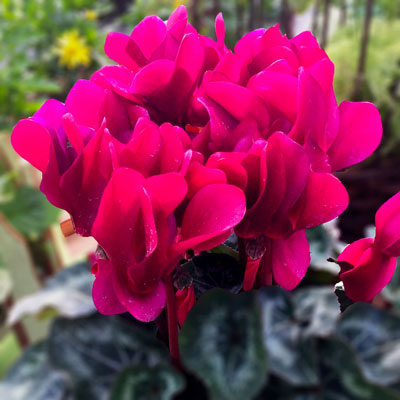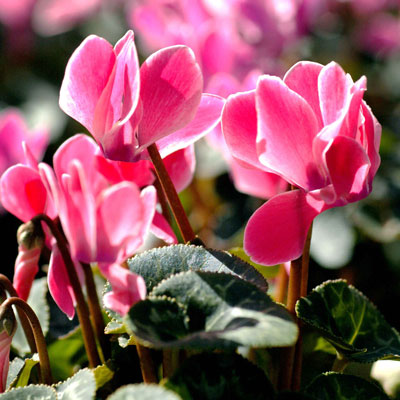Shooting Stars in the Garden

Photo: Cyclamen’s upside-down flowers look like shooting stars.
When I was a kid reading every seed catalog and garden book I could find, they all warned that cyclamen liked heavy soils (as in clay) and that they required really cool temperatures (50-55 F).
Neither of those sounded very plausible to a young horticulturist in College Station, so I filed them away and didn’t think much about them.
In the meantime, however, hybridizers got busy, and now we’re blessed with all kinds of colors and sizes. Cyclamen have really come of age. Red ones. Pink ones. Lavender, purple and white ones. Frilly ones and plain ones. Big ones and little ones.

Photo: Deeper shades of purple bring new interest to cyclamen flowers. Beautiful foliage is a bonus.
And then a new word came into the mix: “hardy” cyclamen, as in hardy to the winter cold. But how much cold could they stand? I asked a lot of growers before I put my neck out on the line, and what I kept hearing was “high 20s – light freezes.”

Photo: Bright pink blooms show the distinct downward form of cyclamen flowers.
My tips to enjoying cyclamen…
• Keep them cool. Don’t put your indoor cyclamen beneath hot air registers or beside fireplaces. But don’t let them get cold. Don’t leave cyclamen outside when a hard freeze is expected.
• You won’t need to repot the large plants you buy for your house, but if you plan to grow cyclamen outdoors, it will probably be easiest to put them into portable patio pots that can be brought into the garage if temperatures plummet if you live in the northern half of the state.
• Use a well-draining potting soil. They don’t handle prolonged waterlogging gracefully. But keep them moist. Wilted plants seldom recover completely.
• Give them bright light. You may read that cyclamen won’t tolerate direct sunlight, but that’s during the summer. You won’t be keeping your plants through the summer (hopefully, because it’s certainly not easy), so that won’t be a factor. Give them sunlight in winter.
• If you’re growing them in patio pots outdoors, apply a water-soluble houseplant fertilizer one or two times between now and mid-spring when they’ve run their course.
• Specifically to the outdoor world, cyclamen plants blend well with other cool-season color. Many people combine them with pansies or sweet alyssum, and they also look great with simple greenery around them.
